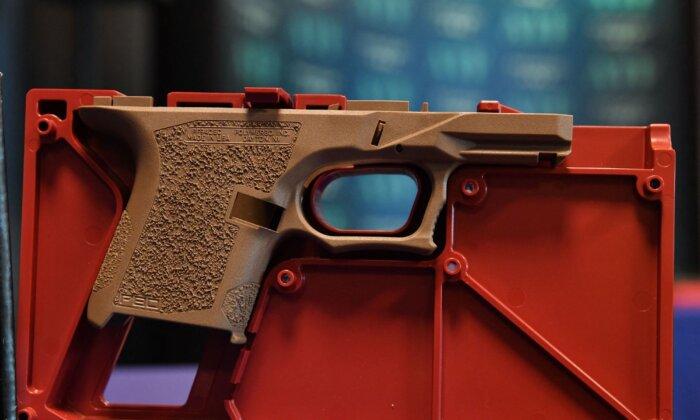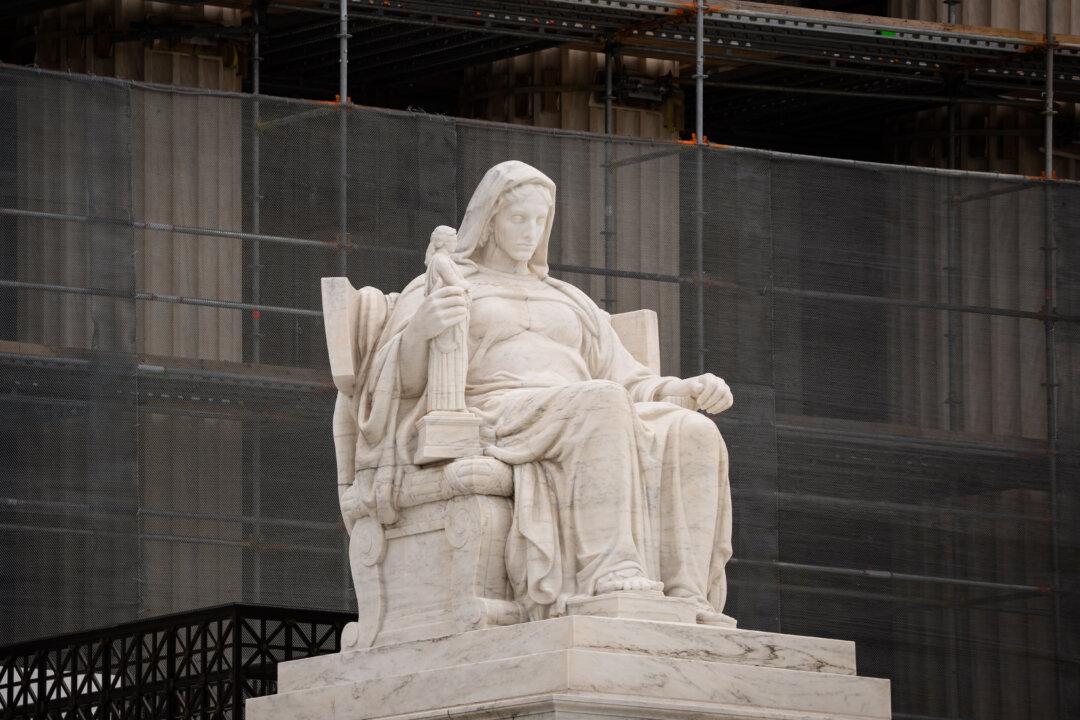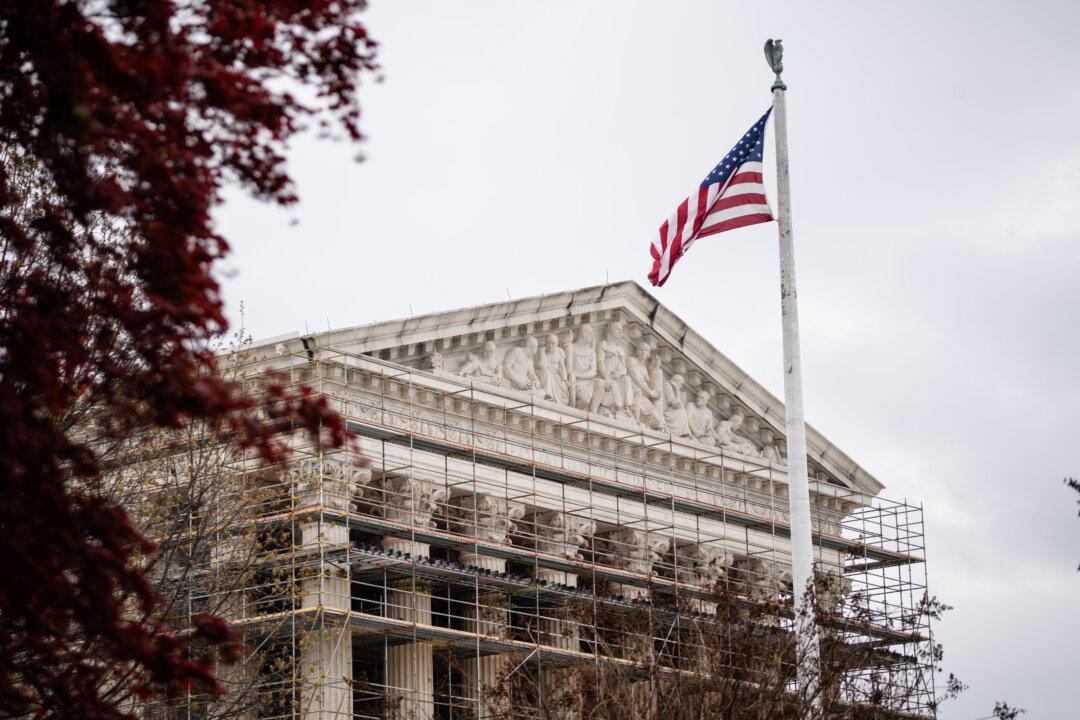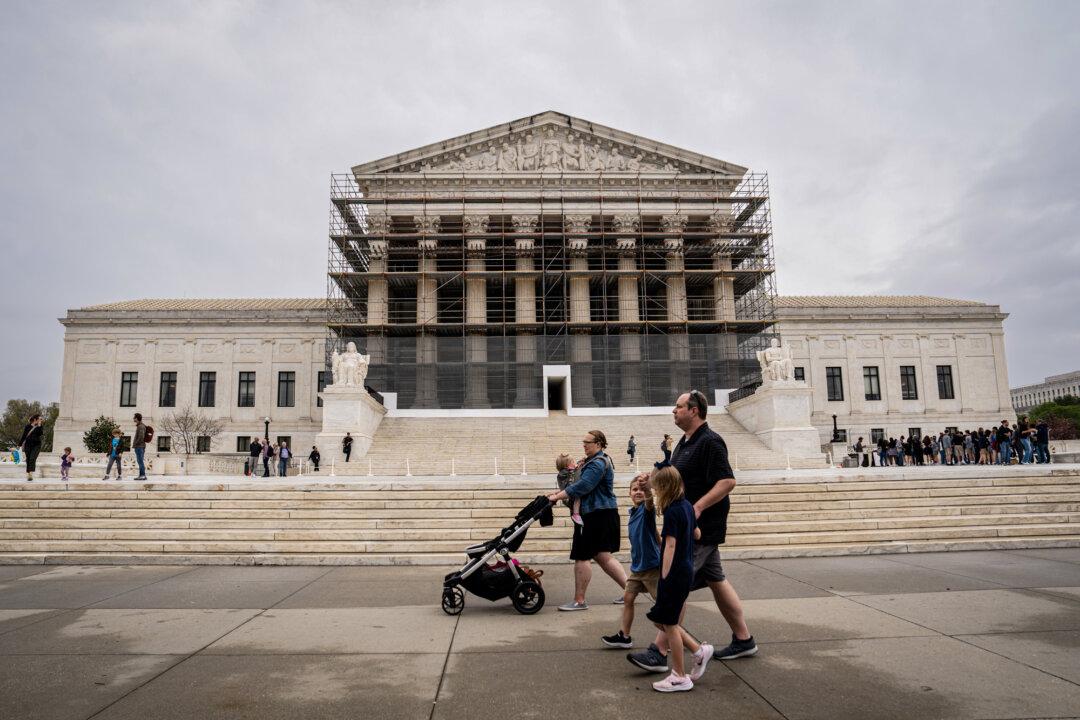A former police officer challenging the federal government’s rule regulating so-called ghost guns that can be assembled at home urged the Supreme Court on Aug. 13 to strike down that rule.
The new filing previews the arguments that will be made when the Supreme Court hears the high-profile case, Garland v. VanDerStok, on Oct. 8.
The petitioner is U.S. Attorney General Merrick Garland. The lead respondent who brought the original lawsuit is Jennifer VanDerStok, a high school teacher and former police officer in Texas who wants to make her own firearms.
“Ghost gun” is a term used to describe a homemade firearm that lacks a serial number and therefore can’t be tracked by law enforcement.
Although some states regulate homemade guns, gun control organizations have been trying for years to ban or regulate homemade guns and gun-assembly kits at the federal level but have failed to persuade Congress to act.
President Joe Biden has claimed that privately made guns, which are often made with gun kits, are the “weapons of choice for many criminals.”
The regulation in dispute—the government’s “frame or receiver” rule—dates to April 2022. It requires individuals who assemble homemade firearms to add serial numbers to them. The rule also mandates background checks for consumers who buy gun kits from dealers.
Pieces of guns that are shipped are nonetheless guns and are subject to existing laws, the government argues.
In June 2023, U.S. District Judge Reed O’Connor disagreed. He blocked the rule and determined that the U.S. Bureau of Alcohol, Tobacco, Firearms and Explosives (ATF), which is part of the Department of Justice (DOJ), went beyond its statutory authority in regulating “partially manufactured firearm components, related firearm products, and other tools and materials.”
In July 2023, the U.S. Court of Appeals for the Fifth Circuit sided with O’Connor. In September 2023, the judge narrowed his injunction, but the DOJ told the Fifth Circuit he was ignoring the Supreme Court’s October 2023 order that temporarily reinstated the rule.
Also in October 2023, the Fifth Circuit said it disagreed with the DOJ’s argument, but at the same time found O’Connor’s injunction “sweeps too broadly” because it affected persons who were not participating in the litigation.
The circuit court vacated the part of the injunction that applied to gun kit customers, saying it did so based on the federal government’s assurances that it “will not enforce the Final Rule against customers who purchase regulated ‘frames or receivers’ and who are otherwise lawfully entitled to purchase firearms.”
The federal government appealed the ruling, filing a petition with the Supreme Court on Feb. 7, which granted it on April 22.
Around the same time, a regulation defined “frame or receiver” as “that part of a firearm which provides housing for the hammer, bolt or breechblock, and firing mechanism, and which is usually threaded at its forward position to receive the barrel.”
A breechblock closes the rear end of the barrel and blocks gases from escaping.
That definition “said nothing about precursors of frames or receivers or parts kits,” the brief says.
But in April 2022 the ATF created a rule that expanded the definition of “firearm.” The rule defined “frame or receiver” to encompass “precursors that ‘may readily be ... converted to function as a frame or receiver.’”
The rule defined firearm “to include weapon parts kits that ‘may readily be ... converted to expel a projectile by the action of an explosive.” The rule also modified the definition of “frame or receiver” to cover the “housing only of the breechblock (for receivers) or one component of the firing mechanism (for frames),” the brief says.
The changes included in the rule “are inconsistent with the GCA’s definition of firearm,” and parts kits are not “firearms” within the meaning of the statute, the brief says.
It is key that when Congress passed the statute it chose “to focus on the commercial firearm market rather than the private making of firearms for personal use.” This means the law does not cover “the items used in private firearm making that ATF attempts to regulate.”
Only Congress, not the ATF, gets to make the changes the ATF desires, the brief says.
“Those provisions of the Rule reflect the plain meaning of the relevant provisions” of the GCA, which the Fifth Circuit “failed to meaningfully analyze.”
The circuit court’s interpretation “would frustrate the Act’s design and make it trivially easy to circumvent the central requirements of the federal firearms laws,” according to the petition.
The Epoch Times reached out to the DOJ for comment on the new brief but did not receive a reply by publication time.







